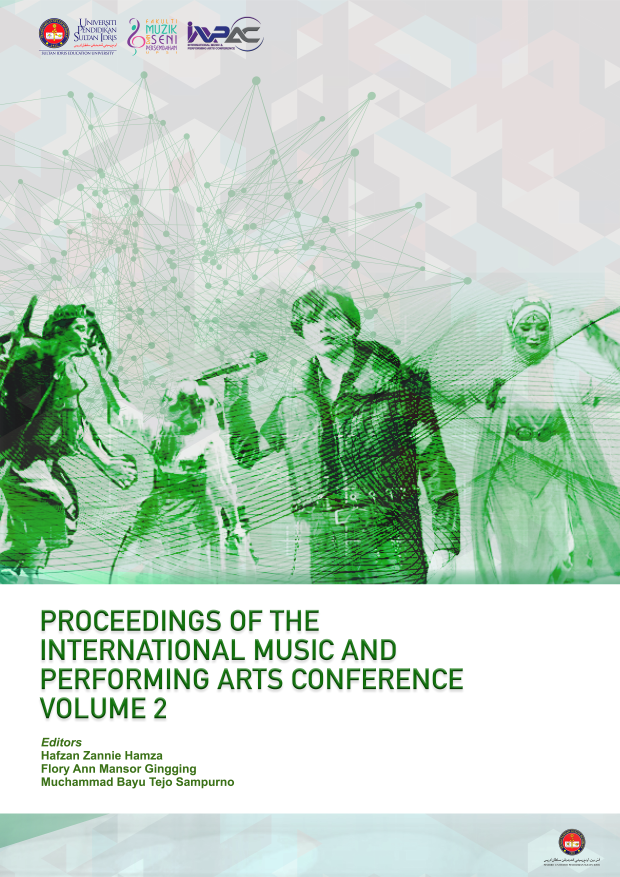Sound Personalisation in Counselling: Bridging Creative Sound Design and Mental Health Support
DOI:
https://doi.org/10.37134/impac.v2.18.2024Keywords:
ambient sound design, counselling environment, mental health, personalised sound-making, soundscapeAbstract
Sound personalisation represents a promising approach in the design of therapeutic environments, particularly in mental health and counselling contexts. This paper proposes a conceptual framework for integrating creative sound design with personalised ambient soundscapes to support emotional regulation, relaxation, and client engagement. Drawing on theories from soundscape ecology, user-centred design, and sound therapy, the paper outlines how personalised sound environments can enhance the counselling experience. Although the deliberate use of sound in therapy is gaining attention, it remains underexplored, particularly in Southeast Asian contexts. Personalised sound interventions offer a non-pharmacological and culturally adaptable means of enriching therapeutic settings, yet they also present challenges in terms of implementation and interdisciplinary collaboration. This paper aims to establish a conceptual foundation for future research and practice in this area. By reviewing key literature and proposing a framework, it seeks to guide the development of tools, environments, and sound-based interventions that support mental well-being through user-responsive audio experiences.
Downloads
References
Braun, V., & Clarke, V. (2012). Thematic analysis. American Psychological Association.
Devlin, H. J., & Sawatzky, D. D. (1987). The effects of background music in a simulated initial counselling session with female subjects. Canadian Journal of Counselling and Psychotherapy, 21(2-3).
Giordano, M. (2022). The best white-noise machines for a blissful night’s sleep. Retrieved from https://www.wired.com/gallery/best-sound-machines/
Krause, A. E., North, A. C., & Hewitt, L. Y. (2014). The role of location in everyday experiences of music. Psychology of Popular Media Culture, VOL, ISSUE, PAGES. Doi:10.1037/ppm0000059
Lawrence, D., Hafekost, J., Johnson, S. E., Saw, S., Buckingham, W. J., Sawyer, M. G., . . . Zubrick, S. R. (2016). Key findings from the second Australian child and adolescent survey of mental health and wellbeing. Australian & New Zealand Journal of Psychiatry, 50(9), 876-886.
Li, T. X., Lin, T. T., Eng, T. L., Xin, T. H., &Wardhani, S. T. K. (2023). Influence ofacademic stress on academic performance: A study of academic stress Malaysia. Asia Pacific Journal ofManagement and Education, 6(3), 117-128. https://doi.org/10.323535/apjme.v6i3.2675
Mezzano, J., & Prueter, B. (1974). Background music and counseling interaction. Journal of Counseling Psychology, 21(1), 84–86. https://doi.org/10.1037/h0036064
Minocha, Shailey (1999). Role of scenarios in work analysis during system design. In: An Industrial Approach to Work Analysis and Software Design, 29 Apr 1999, The Conference Centre, Lancaster University, UK.
Munro B. A., Searchfield G. D. (2019). The short-term effects of recorded ocean sound with and without alpha frequency binaural beats on tinnitus perception. Complement. Ther. Med. 44 291–295. 10.1016/j.ctim.2019.05.005
North, A. C., Hargreaves, D. J., & Krause, A. E. (2016). Music and consumer behavior. In S. Hallam, I. Cross, & M. Thaut (Eds.), The Oxford handbook of music psychology (2nd ed., pp. 789–801). Oxford University Press.
Ortiz, J. M., & Johnson, J. A. (1991). Philosophical worldview determines attitudes toward using background music before, during, and after counselling. Pscychology of music, 19, 159-163.
Prueter, B. A., & Mezzano, J. (1973). Effects of background music upon initial counseling interaction. Journal of Music Therapy, 10(4), 205–212. https://doi.org/10.1093/jmt/10.4.205
Sereda, M., Xia, J., El Refaie, A., Hall, D. A., Hoare, D. J. (2018). Sound therapy (using amplification devices and/or sound generators) for tinnitus. Cochrane Database of Systematic Reviews. Issue 12. DOI: 10.1002/14651858.CD013094.pub2.
World Health Organization (17 November 2021). Adolescent mental health. Retrieved from https://www.who.int/news-room/fact-sheets/detail/adolescent-mental-health
Yasuhiro Kotera, Su-Hie Ting, & Siobhan Neary (2020). Mental health of Malaysian university students: UK comparison, and relationship between negative mental health attitudes, self-compassion, and resilience. Springer Nature, Higher Education (2021) 81:403-419. https: 10.1007/s10734-020-00547-w
Fatehimoghadam, S., Molavynejad, S., Rokhafroz, D., Seyedian, S. M., & Sharhani, A. (2023). Effect of nature-based sound therapy on stress and physiological parameters in patients with myocardial infarction. Iranian Journal of Nursing and Midwifery Research, 28(4), 436–442. https://doi.org/10.4103/ijnmr.ijnmr_221_21
Downloads
Published
Issue
Section
License
Copyright (c) 2024 Nazimin Nazeri, Mohamad Kamal Sabran (Author)

This work is licensed under a Creative Commons Attribution 4.0 International License.
Authors retain copyright and grant the Proceedings of the International Music and Performing Arts Conference (IMPAC Proceedings) the right of first publication.
This licence permits unrestricted use, distribution, and reproduction in any medium, provided the original work is properly cited.




